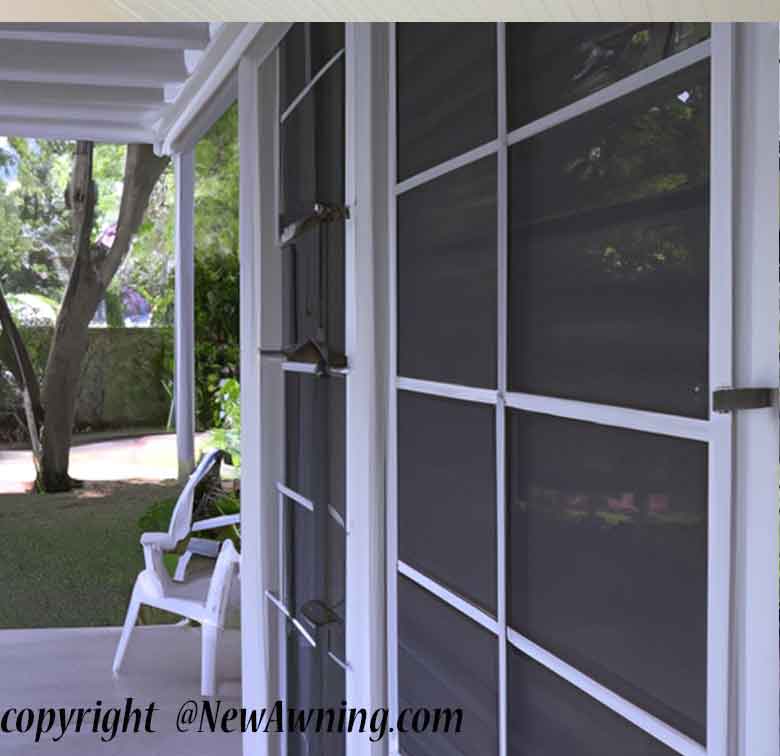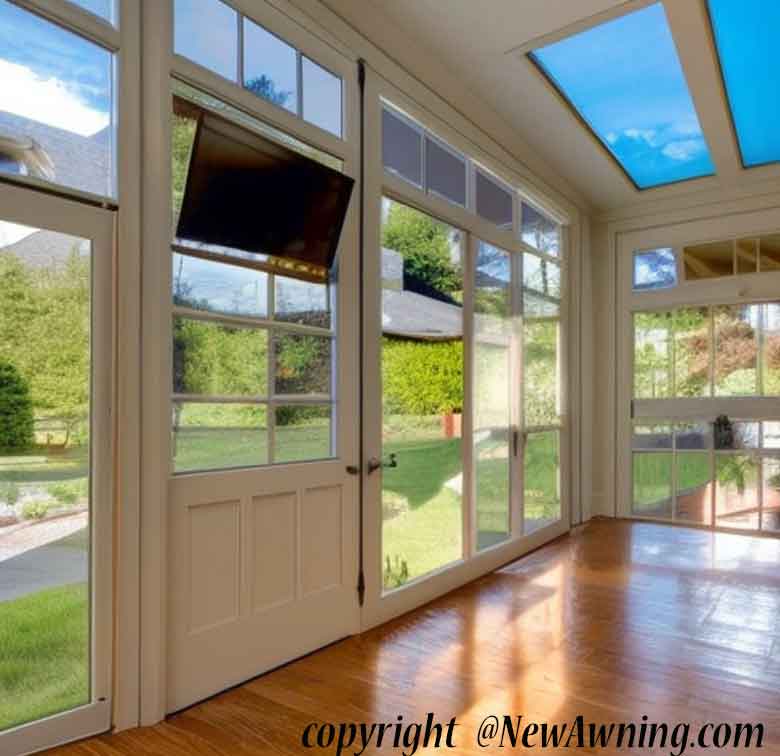Last Updated:April 07, 2024
Repair options for Screened Porches Patios or Decks

A screened porch is a great addition to any home, providing a comfortable and inviting space for relaxation, entertaining, or simply enjoying the outdoors. However, like any other part of your home, a screened porch requires regular maintenance and may occasionally need repair.
From damaged screens to a sagging frame, there are a variety of issues that can arise with a screened porch. Fortunately, there are also a variety of repair options available to help keep your screened porch in good condition.
In this blog post, we’ll explore the different repair options for screened porches, including repairing or replacing the screens, the frame, and other components.
We’ll also provide tips for maintaining your screened porch to prevent future damage and extend its lifespan. Whether you’re dealing with a minor issue or a major repair, there are options available to help keep your screened porch in good condition and fully functional.
So if you’re experiencing problems with your screened porch, don’t despair! With the right repair options and regular maintenance, you can keep your screened porch in top shape and enjoy all the benefits it has to offer.
Repairing or Replacing the Screens:
When it comes to repairing or replacing the screens on a screened porch, there are several options available. If the damage is small, such as a few holes or tears, patching the screens with a special patching kit or a piece of screen material and spline may be sufficient.
If the damage is more extensive, splicing in a new piece of screen material may be necessary. This involves cutting a piece of the new screen to fit the damaged area and attaching it to the existing screen using spline.
If the screens are severely damaged or are no longer functional, a full replacement may be necessary. This involves removing the old screens and installing new ones. Maintaining the screens by keeping them clean and free of dirt and debris, handling them gently, and repairing any damage as soon as it is noticed can help to prevent future damage and extend the lifespan of the screens. Any of the items below may be an issue with your screen.
- Signs that the screens need repair or replacement:
- Holes, tears, or damage to the screens
- Screens that are sagging or loose
- Screens that are difficult to open or close
Here are the ways that you can repair the screens.
- Patching: Small holes or tears can often be repaired by patching the screen with a special screen patching kit or by using a piece of screen material and some spline (the rubber strip that holds the screen in place). This is a quick and easy fix that can help extend the life of your screens.
- Splicing: If the damage to the screens is too extensive to be patched, you may need to splice in a new piece of screen material. This involves cutting a piece of the new screen to fit the damaged area and attaching it to the existing screen using a spline. This is a more involved repair but can be a cost-effective solution if only a small section of the screens needs to be replaced.
- Full replacement: If the screens are severely damaged or are no longer functional, you may need to replace them entirely. This involves removing the old screens and installing new ones. This is the most expensive repair option, but may be necessary if the screens are beyond repair.
Tips for maintaining the screens to prevent future damage:
- Keep the screens clean and free of dirt and debris. This will help to prevent holes and tears from forming.
- Handle the screens gently to avoid damage. Avoid pulling or tugging on the screens, and be careful when opening and closing doors or windows.
- Repair any damage as soon as possible. Small holes or tears can often be repaired quickly and easily, but if left unrepaired, they can grow and become more expensive to fix.
Repairing or Replacing the Frame
If the frame of a screened porch is damaged or not functioning properly, it may need to be repaired or replaced. Signs that the frame needs repair or replacement include a loose or wobbly frame, cracks, rot, or other damage to the wood, and a sagging or uneven frame.If only a small part of the frame is damaged or loose, it may be possible to fix it by tightening screws, replacing broken parts, or using wood filler to repair small cracks or holes.
If the damage to the frame is extensive or the frame is beyond repair, a full replacement may be necessary. This involves removing the old frame and installing a new one.
Maintaining the frame by keeping it clean and free of dirt and debris, checking it regularly for any issues, protecting it from the elements, and repairing any damage as soon as it is noticed can help to prevent future damage and extend the lifespan of the frame.
- Signs that the frame needs repair or replacement:
- Loose or wobbly frame
- Cracks, rot, or other damage to the wood
- Sagging or uneven frame
Options for repairing or replacing the frame:
- Fixing loose or broken parts: If only a small part of the frame is damaged or loose, you may be able to fix it by tightening screws, replacing broken parts, or using wood filler to repair small cracks or holes. This is a quick and easy fix that can help extend the life of your frame.
- Full replacement: If the damage to the frame is extensive or the frame is beyond repair, you may need to replace it entirely. This involves removing the old frame and installing a new one. This is a more involved repair, but may be necessary if the frame is no longer functional.
Tips for maintaining the frame to prevent future damage:
- Keep the frame clean and free of dirt and debris. This will help to prevent rot and other damage.
- Check the frame regularly for loose screws or other issues, and fix them as soon as they are noticed.
- Protect the frame from the elements. Use a weather-resistant sealant to protect the wood from moisture and other environmental factors.
- Repair any damage as soon as possible. Small cracks or holes can often be repaired quickly and easily, but if left unrepaired, they can grow and become more expensive to fix.
Repairing or Replacing Other Components:
There are a variety of other components on a screened porch that may need to be repaired or replaced from time to time. This may include doors, roofs, ceiling fans, lighting fixtures, outlets, and other features.If a component is damaged or not functioning properly, it may need to be repaired or replaced. This may involve fixing loose or broken parts, such as hinges or handles, or replacing the component entirely.
Maintaining these components by keeping them clean and free of dirt and debris, checking them regularly for any issues, protecting them from the elements, and repairing any damage as soon as it is noticed can help to prevent future damage and extend the lifespan of the components.
Options for repairing or replacing doors, roofs, or other features:
- Doors: If the door to your screened porch is damaged or not functioning properly, you may need to repair or replace it. This may involve fixing loose or broken parts, such as hinges or handles, or replacing the door entirely.
- Roofs: If the roof of your screened porch is damaged or leaking, you may need to repair or replace it. This may involve fixing loose or broken parts, such as shingles or flashing, or replacing the roof entirely.
- Other features: Depending on the features of your screened porch, you may need to repair or replace other components, such as ceiling fans, lighting fixtures, or outlets.
Tips for maintaining these components to prevent future damage:
- Keep the components clean and free of dirt and debris. This will help to prevent damage and extend their lifespan.
- Check the components regularly for any issues, and fix them as soon as they are noticed.
- Protect the components from the elements. Use weather-resistant materials and sealants to protect the components from moisture and other environmental factors.
- Repair any damage as soon as possible. Small issues can often be repaired quickly and easily, but if left unrepaired, they can grow and become more expensive to fix.
Conclusion
In conclusion, a screened porch is a valuable and enjoyable addition to any home, but it requires regular maintenance and may occasionally need repair. From damaged screens to a sagging frame, there are a variety of issues that can arise with a screened porch.Fortunately, there are also a variety of repair options available to help keep your screened porch in good condition. Whether you need to repair or replace the screens, the frame, or other components, there are options available to help you get your screened porch back in top shape.
By following the tips and tricks outlined in this blog post, you can successfully repair your screened porch and enjoy all the benefits it has to offer. Don’t let a damaged screened porch ruin your enjoyment of the outdoors – with the right repair options and regular maintenance, you can keep your screened porch in top condition and fully functional for years to come.
